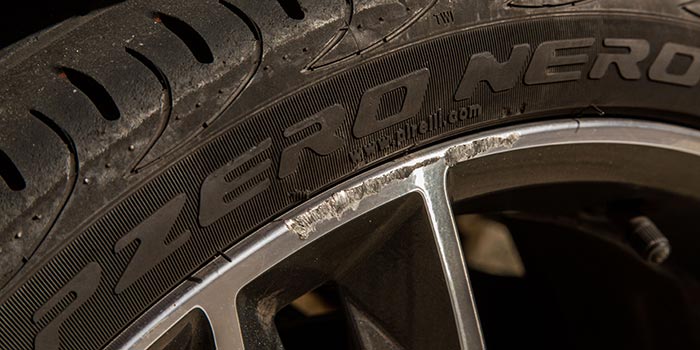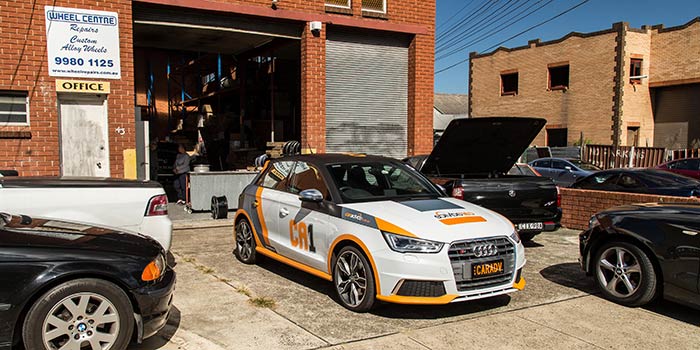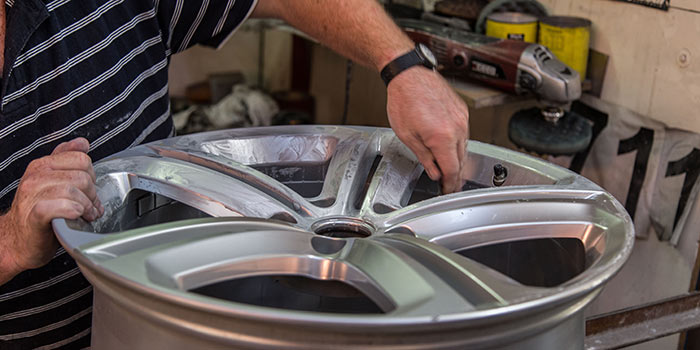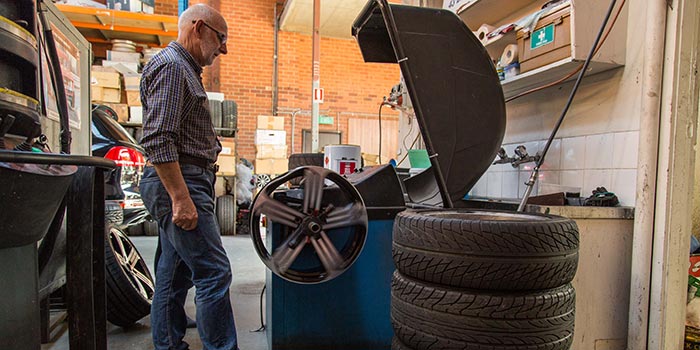Gutter-jumpers, kerb-crushers, pothole-thumpers – we’ve all accidentally cut a corner a little too close, smashed through a giant pothole that looked like a puddle, or missed seeing that big chunk of cement between parks at the shopping centre – I’ll admit I’ve damaged a wheel or two during my driving career.
That crunching scrape will make you cringe as you realise you’ve just decorated your beautiful alloy wheel with scrapes and gouges, or possibly even cracks and dents.
Don’t panic if you scrape a wheel on a kerb. We’ve all done it and it’s usually a relatively cheap and simple fix. In fact, getting it repaired professionally is far cheaper than buying a new wheel.
A decade ago smaller rims were the norm, and they were wrapped in cushy, high-profile rubber. The trend toward larger rim sizes, even on fairly non-sports-oriented cars, has infiltrated the automotive world, with 18 and 19-inch rims now commonly seen on fairly conventional family cars. Bigger rims equals lower profile tyres, and therefore more chance of the rim hitting the gutter.
The CarAdvice office runabout is an Audi S1 with 18-inch wheels. Someone, who shall not be named (and no, it wasn’t me), managed to give one of the wheels a bit of a knock, so we dropped into Wheel Repairs Centre Sydney to find out what they can do and how they do it.
The business has been running for more than 40 years and specialises in fixing wheels that have buckled, cracked, or suffered cosmetic damage. The company also restores classic steel and alloy rims and can make replacement temporary wheels.
Wheel Centre Repairs Sydney managing director, Ian Raymond, was quick to point out that the damage done to the Audi was relatively minor. “No problems to fix that at all, it’s a simple repair,” Raymond said. “However it needs the wheel off, the tyre off, machining and polishing of this particular area and reassembly. So it’s the best part of a day.”
“This particular wheel is probably worth almost $2000 and we’re talking $200-300 to fix it, so a 10 per cent cost.”
There are cheaper ways that take less time and are more convenient, and as Raymond explained, you often trade quality and longevity for that quick fix.
“There are several options with repairs. It depends somewhat on the finish of the wheel. Some wheels are fully painted and some have a machine finish with a clear coat. All of them can be short-term damage disguised, often on-site, and there are many on-site repairers. Their repairs are simple and fast but generally don’t last.
“It’s a disguise. If you walked past the car you wouldn’t react to it. But if you look at the wheel up-close you’ll pick it. The paints that are used are not durable and they tend to be affected by ultraviolet; they yellow, they peel, often when the tyres come off the next time the paint will come off with the tyres as they are being removed. The damage still lies under the surface.
“What we specialise in is full workshop. We have the cars in here, the wheels come off, the tyres come off and we refinish with baked paints back to original factory standard.”
Beyond surface damage, there are more serious types of damage that require urgent and expert attention.
“Normally if the wheel is left buckled it will crack, says Raymond. “It starts off as a buckle and with the constant fatigue of the wheel on the road – thump, thump, thump – it will crack in the end.”
Repairing cracked and buckled wheels is an intricate process and something you don’t want to delay.
If you have hit a pothole and not realised, here are a couple of ways you might be able to tell that a wheel has dents or cracks. “It can get incredibly uncomfortable because the car will be shaking so badly. If you feel the shake in the seat its usually the rear wheel, if its in the steering it’s usually the front wheel and you have to find which ones are buckled.”
A good repairer will go to great lengths to fix a wheel, but there are limitations and your repairer will help you make a value judgement.
“If it’s a copy wheel or a very poor quality wheel we’d say just don’t bother. Just get other wheels; lose this wheel and try to find another one. If it’s a rare wheel – could be an old classic wheel or it could be a very high value wheel – then we’ll do our best to get it running true again.”
If there is a crack straight across the spoke, then there is nothing to be done and the wheel is essentially scrap metal.
“That is an absolute no-no, because for wheels to fail, if they fail through the spoke that is usually due to enormous overload or very bad manufacturing.”
The ready availability of fake wheels is a concern, and Wheel Centre Repairs Sydney has seen its fair share of knock-offs.
“We see a lot of them, and a lot of people buy these on eBay or Gumtree. They buy a set and often they are really scrap metal, they’re buckled, they’re cracked and then they have to spend a lot of money getting them to run true again. Inexpensive copy wheels are inexpensive because the manufacturing standards aren’t very good compared with factory wheels.”
The golden rule here is that you really do get what you pay for.
“That said, there are some really good aftermarket wheels, which are not as expensive as original but are really quality wheels as well. But the copy wheels are generally not that good.
“The more expensive wheels would really go to the high-end supercars. Our record is the super-duper Lexus (LFA) at around $8500. Then you come down to imported cars.
Generally a Toyota Corolla is $1100 a wheel, Ford Fiesta $1600. Everything is about the $1000 mark for a standard factory original wheel. Hence the temptation to go and put copy wheels on because a set will be less than $1000, normally.”
After many years in the business, Raymond doesn’t even hesitate when asked which is the most commonly damaged wheel.
“For cosmetic damage, it’s usually the left rear from reverse parking. For buckling and other damage, the left front. People tend to drive around potholes and impact risks, but the left side is always on the kerbside, it’s where the trucks break up the road, it’s where you can run off the road. The left front is where it can really get damaged,” he said.
So how can you avoid damaging your wheels? At the risk of sounding like Captain Obvious, as Raymond said, avoid the kerbs. It’s as easy as that.
Given the popularity of low-profile tyres and large rims, we doubt we’ll see people switching back to bulging rubber simply to prevent wheel damage. All you can do is be careful and fix structural damage promptly to prevent further problems.










